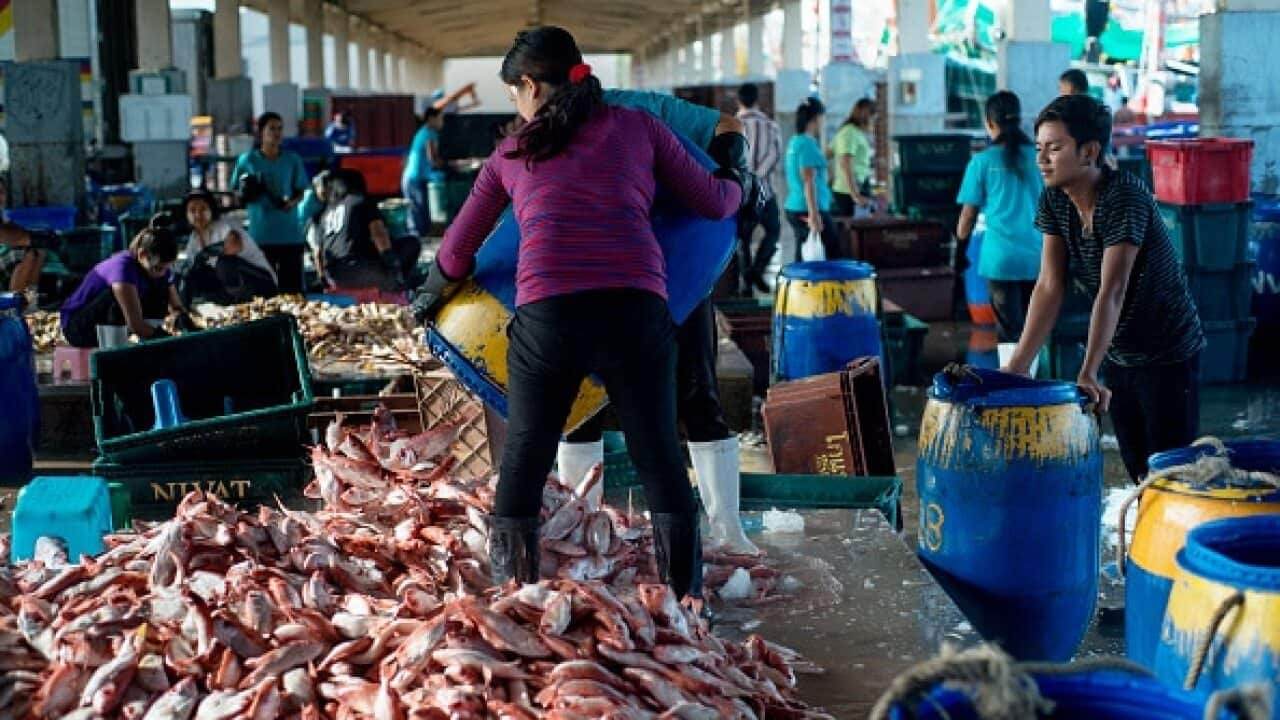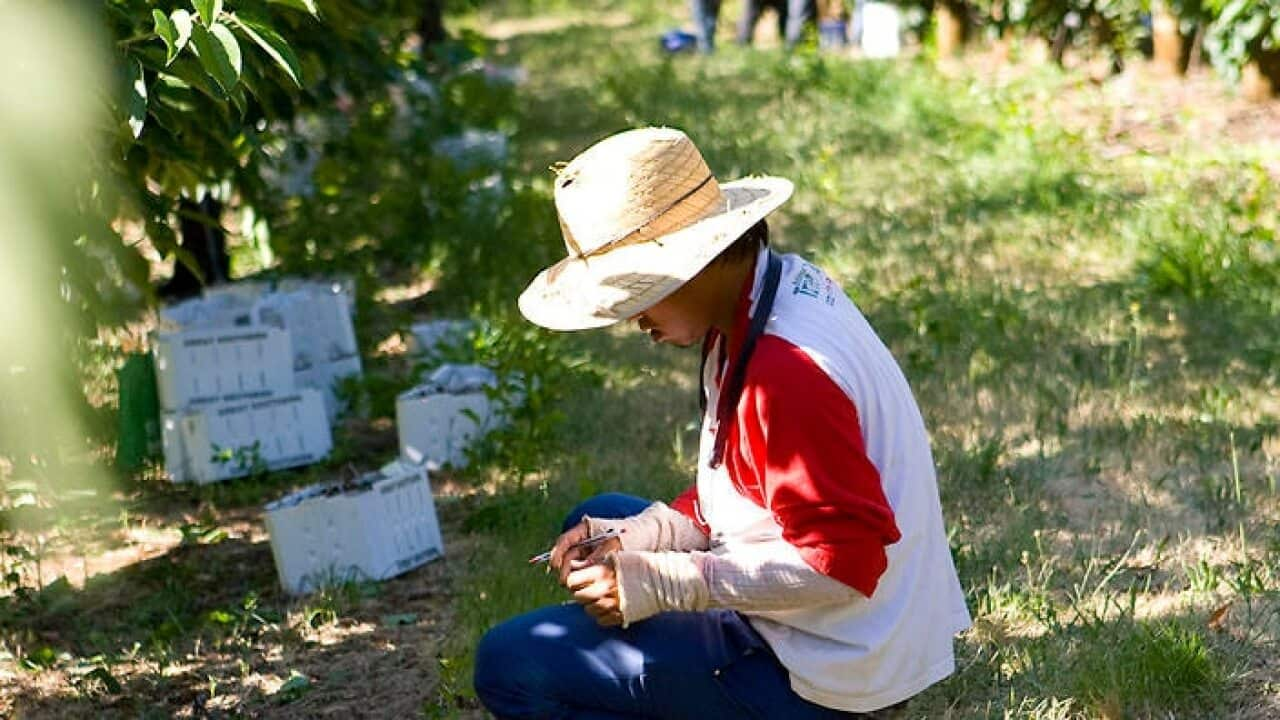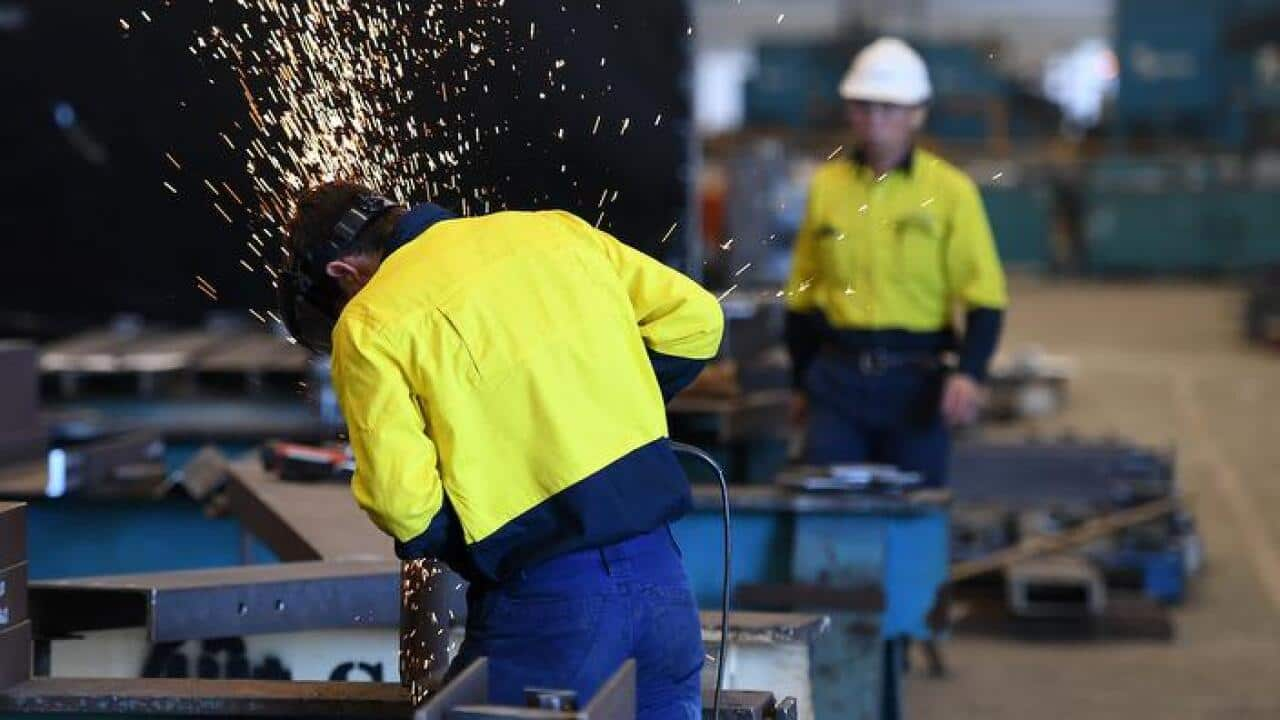最新報告指出,澳洲零售商應加強保證從外進口的海鮮並非利用奴役工人生產。
這份在《科學進展(Science Advances)》雜誌上發表的《海鮮供應鏈中可見的奴役制》報告,針對海鮮供應鏈內的奴役情況,敦促零售商向他們的供應商提出質疑。
他說:「如果消費者有機會作出查詢,他們所購買的吞拿魚的出產過程,是否涉及強迫勞工等奴役制度,零售商便可以回答他們:是、否、有可能。」 他續指:「零售商亦可向客戶表示,這些就是有關的數據,而他們亦已盡力了解當中的可能性。」
他續指:「零售商亦可向客戶表示,這些就是有關的數據,而他們亦已盡力了解當中的可能性。」

Migrant workers on a fishing boat Phuket, Thailand. Thailand's fishing industry is rife with slave labour. Source: Getty Images
瓦爾德表示,消費者便可作為一個推動力。
目前,澳洲嚴格的法例保證本地的出產大部份都不涉及奴役勞工,但在泰國、印尼及中國的漁業卻充斥奴役的情況。
反對奴役及人口販運組織 Walk Free Foundation 全球研究行政總監大衛(Fiona David)表示,在暴力威脅下,這些國家的漁民經常被逼長年在船上無薪工作。
她說:「我們曾經見過不少極端例子,漁民親眼目睹謀殺,並被人俘虜在船隻內、遭到毆打。」
她指出,有見及此,商家有必要訂立一切可行的方法及程序,確保生產過程不涉及這些風險。
有統計數字顯示,澳洲所進口的 120 億元商品被歸類為有機會涉及奴役工人的貨品,當中有工人可能被人強制逗留在船隻中、無法逃離或被救出。

A migrant worker seen through a window of a fishing boat that is docked in Phuket. Source: Getty Images
READ MORE

【時事報導】 政府考慮推出農業簽證幫助鄉郊地區






